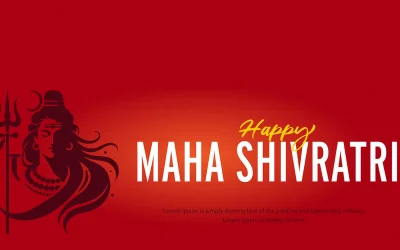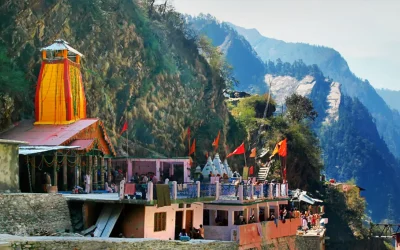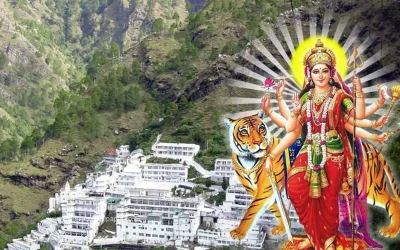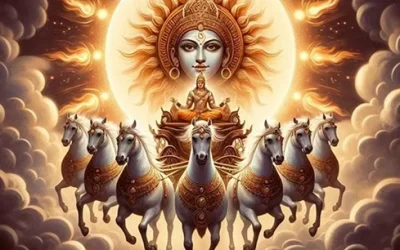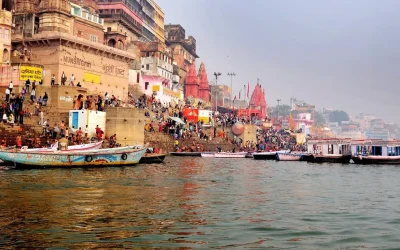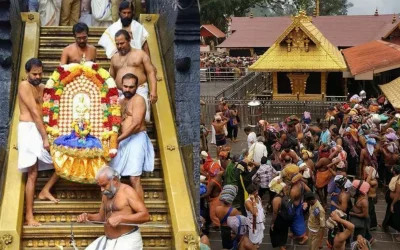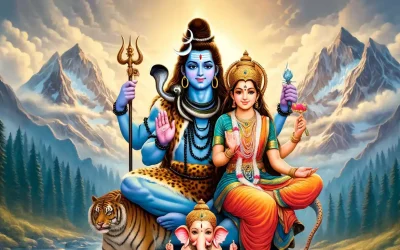History of Shakti Peeta
Introduction to Shakti Peethas:
Shakti Peethas hold a significant place in Hindu mythology and spirituality. These sacred sites are believed to be infused with the divine energy of the Goddess Shakti, also known as Sati, consort of Lord Shiva. The narrative behind Shakti Peethas intertwines legend, devotion, and geography, creating a rich tapestry that spans the Indian subcontinent. The story of Shakti Peethas originates from the tragic tale of Sati’s self-immolation at her father’s sacrificial yagna, and the subsequent events that followed. Lord Shiva’s inconsolable grief and rage led to the creation of these sacred sites, marking the spots where Sati’s body parts fell. Devotees visit these Shakti Peethas to seek blessings, solace, and spiritual awakening, recognizing the enduring power of the divine feminine energy that permeates the universe.
The Story Behind Shakti Peethas:
The story of Shakti Peethas begins with the marriage of Sati, the daughter of King Daksha, to Lord Shiva against her father’s wishes. One day, King Daksha organized a grand yagna but did not invite Lord Shiva. Despite Lord Shiva’s advice, Sati decided to attend the yagna, feeling hurt and disrespected by her father’s actions. Upon reaching the yagna, King Daksha insulted Lord Shiva in front of all the assembled guests, which proved unbearable for Sati. Unable to withstand the humiliation of her husband, Sati invoked her divine power and immolated herself in the sacrificial fire.
Upon hearing of Sati’s sacrifice, Lord Shiva was overwhelmed with grief and anger. He tore out a lock of his hair and struck it on the ground, creating the fierce warrior, Veerabhadra, and a horde of fierce beings to wreak havoc at the yagna, destroying it completely and punishing Daksha. In his inconsolable grief, Lord Shiva took Sati’s charred body and began the cosmic dance of destruction, the Tandava. To stop him from destroying the universe, Lord Vishnu intervened and used his Sudarshana Chakra (divine discus) to cut Sati’s body into pieces, which fell at various places on Earth. These places became known as Shakti Peethas, where the divine feminine energy, Shakti, is worshipped in her different forms.
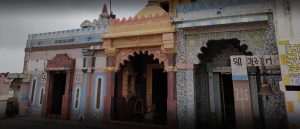
Significance of Shakti Peethas:
Each Shakti Peetha is revered as a sacred site of worship and pilgrimage, embodying the divine presence of the Goddess and attracting devotees seeking blessings and spiritual fulfilment. These Shakti Peethas are not merely geographical locations but represent the cosmic power of the Goddess in specific forms associated with the body parts of Sati. The worship at these Peethas is believed to bestow devotees with various boons, protection, and spiritual enlightenment. The significance of each Shakti Peetha lies not only in its mythological origins but also in its cultural and spiritual relevance to devotees across generations.
List of Shakti Peethas with Significance:
- Hinglaj Mata Temple, Balochistan: It is believed that the head of Sati fell here, and the deity is worshipped as Hinglaj Mata.
- Jwalamukhi Temple, Himachal Pradesh: The tongue of Sati is said to have fallen here, and the goddess is worshipped as Jwalamukhi, the flaming mouth.
- Kamakhya Temple, Assam: The yoni (reproductive organ) of Sati fell here, making it one of the most powerful Shakti Peethas.
- Vaishno Devi Temple, Jammu and Kashmir: The right hand of Sati is believed to have fallen here, and the deity is worshipped as Vaishno Devi.
- Katyayani Temple, Vrindavan, Uttar Pradesh: It is believed that the anklet of Sati fell here, and the goddess is worshipped as Katyayani.
- Kalmadhav Temple, Chhattisgarh: The left buttock of Sati fell here, and the deity is worshipped as Kali.
- Ambaji Temple, Gujarat: The heart of Sati is said to have fallen here, and the goddess is worshipped as Ambaji.
- Kamgiri Temple, Chitrakoot, Madhya Pradesh: It is believed that Sati’s left breast fell here, and the goddess is worshipped as Kamakhya.
- Trimbakeshwar Temple, Maharashtra: The crown jewel of Sati is said to have fallen here, and the deity is worshipped as Trimbakeshwar.
- Bhramari Devi Temple, West Bengal: The brows of Sati are believed to have fallen here, and the goddess is worshipped as Bhramari Devi.
- Manasa Devi Temple, Uttarakhand: It is believed that the necklace of Sati fell here, and the goddess is worshipped as Manasa Devi.
- Kireet Shakti Peetha, Kireet: It is believed that the crown of Sati fell here, and the deity is worshipped as Devi Kireet.
- Bahula Shakti Peetha, Bahula: The left arm of Sati is said to have fallen here, and the goddess is worshipped as Bahula.
- Guhya Kali Temple, Birbhum, West Bengal: The center part of the Sati’s body fell here, and the deity is worshipped as Guhya Kali.
- Kapalini Temple, Kamrup, Assam: The forehead of Sati is said to have fallen here, and the goddess is worshipped as Kapalini.
- Bhuvaneshwari Temple, Bihar: The ringlets of hair of Sati are believed to have fallen here, and the goddess is worshipped as Bhuvaneshwari.
- Prabhas Patan, Gujarat: It is believed that the small finger of the left hand of Sati fell here, and the deity is worshipped as Chandrabhaga.
- Chandranath Temple, Sylhet, Bangladesh: The left shoulder of Sati is said to have fallen here, and the goddess is worshipped as Chandranath.
- Ramagiri Temple, Karnataka: The hair of Sati is said to have fallen here, and the goddess is worshipped as Ratnavali.
- Kankalitala Temple, Birbhum, West Bengal: The skeleton of Sati is believed to have fallen here, and the goddess is worshipped as Kankalitala.
- Shondesh, West Bengal: It is believed that the right arm of Sati fell here, and the deity is worshipped as Nandini.
- Bakreshwar Temple, Birbhum, West Bengal: The part of the body to the left of the waist of Sati is said to have fallen here, and the goddess is worshipped as Mahishamardini.
- Kalighat Temple, West Bengal: The right toe of Sati is said to have fallen here, and the goddess is worshipped as Kali.
- Barahi Temple, Nepal: The left side of the neck of Sati is believed to have fallen here, and the goddess is worshipped as Barahi.
- Kiriteshwari Temple, West Bengal: It is believed that the crown of Sati fell here, and the deity is worshipped as Kiriteshwari.
- Shri Purnagiri Temple, Uttarakhand: The navel of Sati is said to have fallen here, and the goddess is worshipped as Purnagiri.
- Vakreshwari Temple, West Bengal: The left toe of Sati is believed to have fallen here, and the goddess is worshipped as Vakreshwari.
- Naina Devi Temple, Himachal Pradesh: It is believed that the eyes of Sati fell here, and the goddess is worshipped as Naina Devi.
- Kali Temple, Kalighat, Bangladesh: The right toe of Sati is said to have fallen here, and the goddess is worshipped as Kali.
- Kiritkona Shakti Peetha, Kiritkona: The left part of the head of Sati is believed to have fallen here, and the deity is worshipped as Goddess Manasa.
- Phullara Shakti Peetha, Phullara: It is believed that the ankle of the right leg of Sati fell here, and the goddess is worshipped as Phullara.
- Gandaki Temple, Nepal: The lips of Sati are said to have fallen here, and the goddess is worshipped as Gandaki Devi.
- Viraja Temple, Orissa: It is believed that the navel of Sati fell here, and the deity is worshipped as Viraja.
- Guptakashi Temple, Uttarakhand: The flanks of Sati are believed to have fallen here, and the goddess is worshipped as Guptakashi.
- Chintpurni Temple, Himachal Pradesh: It is believed that the forehead of Sati fell here, and the goddess is worshipped as Chintpurni.
- Shri Parvat Temple, West Bengal: The nose of Sati is said to have fallen here, and the goddess is worshipped as Shri Parvat.
- Devi Talab Temple, Jalandhar, Punjab: It is believed that the right breast of Sati fell here, and the goddess is worshipped as Devi Talab.
- Shakti Peetha Temple, Rajasthan: The tooth of Sati is said to have fallen here, and the deity is worshipped as Shakti Peetha.
- Kankali Temple, West Bengal: It is believed that the bones and flesh of Sati fell here, and the goddess is worshipped as Kankali.
- Danteshwari Temple, Dantewada, Chhattisgarh: The tooth of Sati is said to have fallen here, and the goddess is worshipped as Danteshwari.
- Renuka Temple, Himachal Pradesh: It is believed that the finger of Sati fell here, and the goddess is worshipped as Renuka Devi.
- Sankari Devi Temple, Tripura: The buttocks of Sati are believed to have fallen here, and the goddess is worshipped as Sankari Devi.
- Nalhati Shakti Peetha, Nalhati: It is believed that the throat of Sati fell here, and the deity is worshipped as Nalateshwari.
- Attahas Shakti Peetha, Attahas: The right arm of Sati is said to have fallen here, and the goddess is worshipped as Attahas.
- Sundaravalli Temple, Vellore, Tamil Nadu: It is believed that the mouth of Sati fell here, and the goddess is worshipped as Sundaravalli.
- Mahalakshmi Temple, Kolhapur, Maharashtra: The eyes of Sati are said to have fallen here, and the goddess is worshipped as Mahalakshmi.
- Kala Bhairav Temple, Ujjain, Madhya Pradesh: It is believed that the temple tank of Sati fell here, and the deity is worshipped as Kala Bhairav.
- Bhramaramba Temple, Andhra Pradesh: The left part of Sati’s body is believed to have fallen here, and the goddess is worshipped as Bhramaramba.
- Manikyamba Temple, Andhra Pradesh: It is believed that the left cheek of Sati fell here, and the deity is worshipped as Manikyamba.
- Saraswati Temple, Basara, Telangana: The Vagvadhini Peetha where the Sati’s left cheek fell, worshipped as Saraswati.
- Jogulamba Temple, Alampur, Telangana: The Jogulamba temple where Sati’s upper teeth fell, worshipped as Yogamba.
Conclusion:
The journey through the 51 Shakti Peethas is not just a pilgrimage; it’s an exploration of ancient legends, regional histories, and the enduring power of devotion. These sacred sites serve as reminders of the divine feminine energy that permeates the universe, inspiring millions to seek solace, strength, and spiritual awakening. As we conclude this odyssey, may we carry with us the blessings of the Goddess and continue to tread the path of righteousness and enlightenment.
